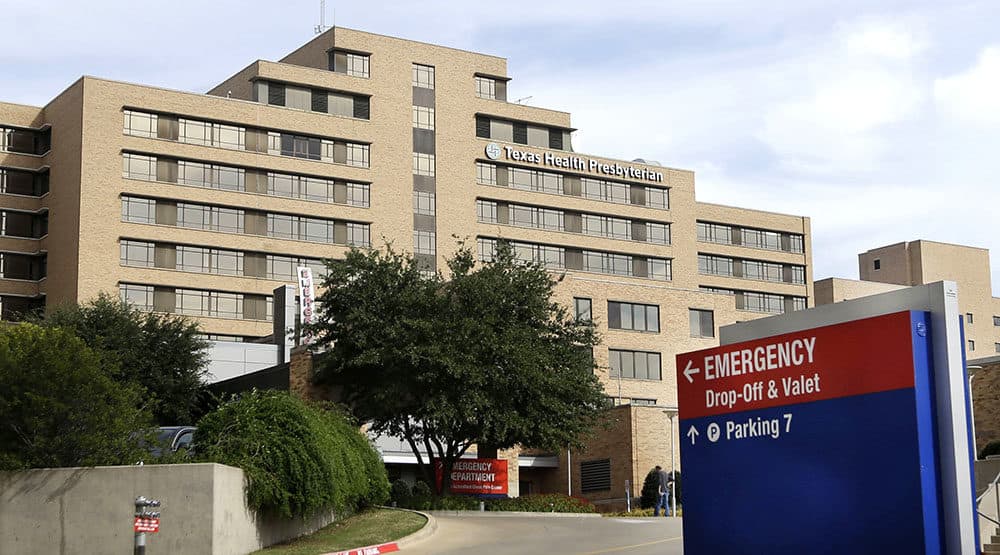Advertisement
Commentary
Opinion: I'm An Emergency Room Physician. Inadequate Access To Health Care Is Breaking Us

This is part of our hour on emergency room overcrowding and its impact on patient care, which you can listen to here.
Emergency departments undoubtedly exist for emergencies.
But as health care has evolved, the scope of emergency medicine has expanded beyond “classic” emergencies — heart attacks, sepsis, gun shots wounds, car crashes, strokes — and into 24/7 health care.
Patients are flooding the emergency department when the health care system has failed them.
Emergency rooms no longer just exist for emergency care, but now encompass all available care. With limited beds and staff, the surplus of sick patients spills into the waiting rooms, and tragedies are left in the wake.
We are health care's safety net — America’s safety net — and we are intensely proud to be that.
But what happens when safety nets are stretched to their limit?
"We are health care's safety net – America’s safety net – and we are intensely proud to be that. But what happens when safety nets are stretched to their limit?"
Dr. Amy Faith Ho
A 2017 study found that nearly half of all medical care in the United States is being performed in emergency departments, with a large proportion of that care being rendered to vulnerable and underserved populations.
Just weeks ago, a young woman died after leaving a Milwaukee emergency department waiting room, where she had sat for hours without being seen. Last summer, a patient died in Houston’s Ben Taub hospital waiting room. And in October, an unattended emergency patient in Pennsylvania died in a wheelchair before he was moved into a treatment area.
These patients were victims of a crippled American health care system, held up only by the overburdened crutch of emergency departments.
All emergency departments struggle with issues like overcrowding and stretched staff-to-patient ratios. These resource constraints, in conjunction with an inherently high-risk population, create an environment set up for tragedy.
One of the most commonly cited causes of emergency department inefficiency is “boarding” (also known as “admit holds”). This is when a patient has been admitted to the hospital, but is waiting for an inpatient bed to free up so they can be transferred. In the meantime, the patient occupies an emergency department bed that is needed by a patient still in the waiting room.
Emergency departments are not a final destination for most patients, but a transit stop to another disposition – whether it be home or another hospital destination like an operating room, inpatient bed or specialty care. As a result, the availability of emergency beds is often at the mercy of the limited resources of other departments in the hospital and health care system.
What is an emergency department, full of sick patients waiting to be seen, to do about overcrowding?
As a field, we have created ways to try to care for patients in an otherwise impossible situation. Practically, this means that patients are “boarded” in hallways or unlicensed care areas to make room for new patients in the waiting room that still need to be seen.
Multiple studies have shown that “hallway medicine” is substandard medical care, but despite that, hallway beds are an unfortunate reality of life in America’s emergency departments.
Like hallway medicine, every additional initiative to decompress the waiting room acts as only a patch to the overflowing health care pipeline: the demand for emergency care still drastically outpaces the supply.
With every patch, an inevitable trade-off is made with the standard of care. It is hard to define the threshold of “standard” and “substandard” care when in reality there is only one type of care: necessary.
No one understands this better than those that work daily and nightly in the pressure cooker of the emergency department. Despite understaffing, underfunding, lack of physical space and rooms and rampant overcrowding, we see the patients that need us the most, wherever we can, however we can, to the best of our abilities.
But the moral injury of working in these conditions is not trivial. Besides the under-resourced care we are delivering in strapped conditions, the agitation of patients and family members can lead to a “waiting room rage” of their own.
Patients waiting for long hours understandably get agitated.
Mix in aggressive or intoxicated patients running up and down the hallways, family members receiving devastating news, elderly septic patients swinging wildly at anyone trying to help them, hallucinating psychiatric patients hearing voices, and you'll get an idea of what an emergency room in chaos is like.
Workplace violence is a norm. Health care workers are frequently victims of physical assault, not to mention verbal assault. 75% of nearly 25,000 workplace assaults happen in health care settings. In a place of healing, the irony is stunning.
"In a place of healing, the irony is stunning."
Dr. Amy Faith Ho
Besides the physical impact of these situations, there is a significant mental one. Doctors and nurses are both joining the ranks of America’s mental health statistics. A 2018 study found that physicians are committing suicide at twice the rate of the rest of the population, and nurse suicide is quickly climbing as well.
Such is the state of emergency departments today: understaffed, under-resourced, and operating in a delicate state between survival and disaster.
America is breaking us.
We need the rest of the health care system to help. We need clinics to make available appointments, specialists to become accessible, preventative care to become rewarded and insurance to minimize red tape. We need politicians to prioritize health care, better protection from violence and sufficient resources to run our departments.
We are the safety net in health care, but who is ours?
All views expressed are only those of the author, and do not represent the opinions of any affiliates.
This segment aired on February 4, 2020. The audio for this segment is not available.